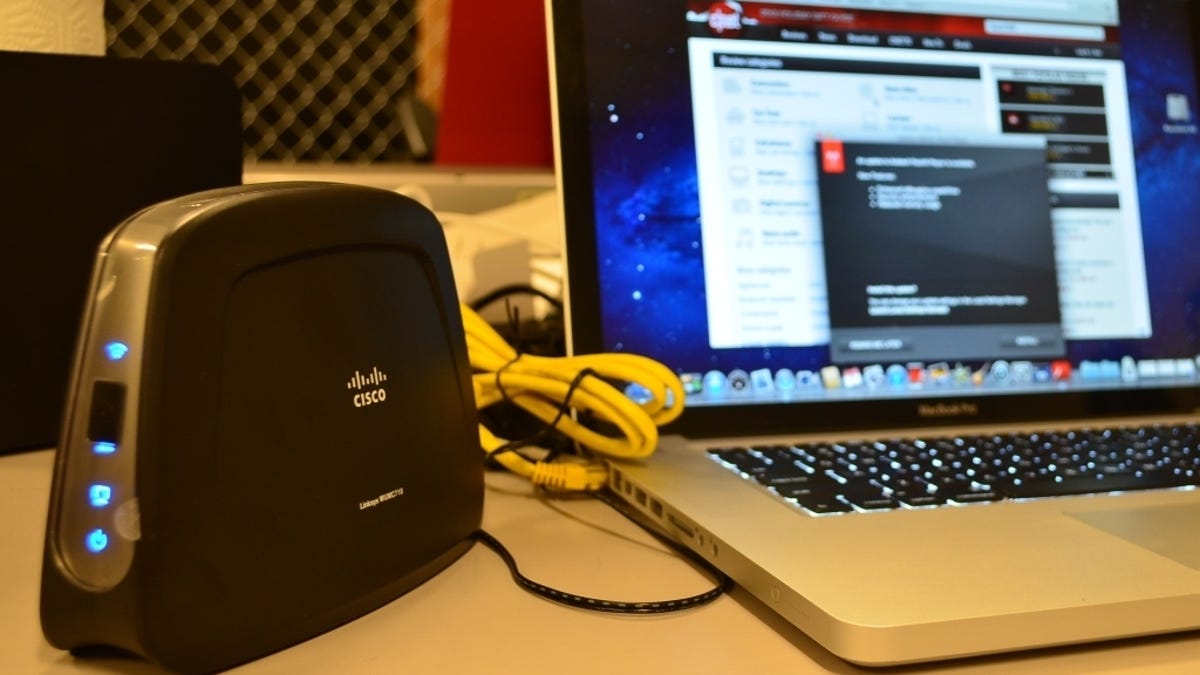How CNET tests networking devices
Wondering how routers and power-line adapters are tested for CNET reviews? You're in the right place.
In the networking device category, CNET conducts performance tests only on Wi-Fi routers and power-line adapters. Simply put, these are the two types of devices for which it is easy to measure data rates in repeatable and meaningful ways. For more information on other aspects of home networking devices, check out this series on their basics.
A router is the central gateway of a home network. Not only does it connect all devices together via network cables or Wi-Fi signals to form a network, but also it connects to the Internet via its WAN port, and it shares that connection with other devices. Power-line adapters, on the other hand, extend the local network even farther by turning a home's electrical wiring into network cables.
Testing these devices means measuring the data speeds that they deliver among connected clients. For routers, we test only the speed of the Wi-Fi signals, while for power-line adapters, we test the data signal transferred through electrical wiring. For more on our testing process, the full details are described below.
Locating local internet providers
Wi-Fi routers
Currently, CNET reviews only home Wi-Fi routers that support Wireless-N (802.11n) or 5G Wi-Fi (802.11.ac) standards. Routers with older standards, such as the 8021.11g, are becoming obsolete.
Test system: We test routers in a network made of multiple connected clients. Most of the time, we use at least two PCs, one Mac, and an assortment of other Wi-Fi clients such as smartphones and tablets. If the networking vendors don't provide a Wi-Fi adapter with the router, we use a dual-band, three-stream Trendnet TEW-684UB adapter, which supports up to 450Mbps for each of the two 5GHz and 2.4GHz bands, for the speed test.
Locating local internet providers
Test environment: We test all Wi-Fi routers in the CNET Labs at our San Francisco headquarters. Though they lack the comforts of home, our labs resemble a typical home environment with the presence of other unrelated Wi-Fi devices and electronics. Keep in mind that the data rate scores that we report in a CNET review represent our real-world tested numbers and may very well differ from any promised performance from either vendors or the respective Wi-Fi standard.
Router settings: We test all routers with the latest firmware available at the time of testing. Since not all routers offer the same settings and options, we test using the default factory settings with one exception: Wi-Fi network names (or SSIDs) are customized for each frequency band and are encrypted with the same WPA 2 standard and the same password (or encryption key). And for those devices that offer multiple settings for their Wi-Fi networks, we test with the optimal settings for each frequency band and each Wi-Fi standard. In this case, we report the most favorable scores.
There are two main speed tests for Wi-Fi routers, the data throughput test and the stress test.
Data throughput test
This test determines the actual real-world data rate of the router's Wi-Fi signal. The computer that hosts the test data, which is a 1.24GB file, is connected to the router via a network cable. Depending on the router, this connection is either Gigabit (1,000Mbps) or traditional Ethernet (100Mbps). After that, a single Wi-Fi client is connected to the router via its Wi-Fi network. If the router is a dual-band router, the Wi-Fi client is connected to each of its bands separately.
The test is performed under two setup scenarios. The first is the close-range test, where the client is just 15 feet away from the router. To begin, we copy the test file from the host computer to the Wi-Fi client and determine the speed by dividing the test file's size (in MB) by the number of seconds required for the job to complete. For consistency, we perform multiple tests.
The second is the long-range test, where we use the same procedure while putting the client 100 feet away from the router. For 802.11ac routers, we run these tests separately with a 802.11ac client and a 802.11n client.
Stress test
This determines the stability of the router's Wi-Fi signal. We have the router transfer a large amount of data back and forth between multiple wired clients using different Wi-Fi standards while monitoring the clients to see if any disconnection occurs. If we don't detect a disconnection after 24 hours, we continue the test for another 24 hours. If a router finishes a 48-hour stress test with no disconnection (meaning that it passes), we rate its Wi-Fi signal as excellent.
Power-line adapters
Power-line adapters require a much more straightforward test. Generally, these adapters come in a kit of two, which is the minimum amount needed to create the first power-line connection. For this test, we connect the host computer to a designated test router via a Gigabit Ethernet connection. Then, we connect the client computer to the same router via the power-line connection created by the two adapters. After that, we copy a data file of 1.24GB from the host to the client. Again, we normally do multiple trials until we determine a consistent score.


